Information
Join us for tips, helps, questions and answers about the gardening world. Monitored by a Certified Master Gardener but wisdom is shared by ALL.
Members: 43
Latest Activity: Nov 26, 2023
Gardener's Corner
GREETINGS MEMBERS, GUESTS AND VISITORS.
Chief Walks In Shadows is a Florida State Master Gardener.
He will post information that he feels will benefit everyone as a whole. But basically this will be a question and answer group.
IF A GROUP MEMBER KNOWS THE ANSWER TO ANY QUESTION PLEASE FEEL FREE TO ANSWER.
Chief Walks will answer all questions asked to him directly. He has over 40 years of experience. And a sizable personal research library.
We are here to meet ALL of your gardening questions and/or related subjects.
FYI:
If an article, or post to the 'Comment Wall',
is larger than 4000 characters long
it will have to be created as a page.
See 'Pages' to the right. ----->
LIVE GREEN. PROTECT OUR MOTHER EARTH AND OUR HUMAN FAMILY.
The USDA Hardiness Zone Map divides North America into 11 separate zones; each zone is 10°F warmer (or colder) in an average winter than the adjacent zone. If you see a hardiness zone in a catalog or plant description, chances are it refers to the USDA map. To find your USDA Hardiness Zone or use the map below.
Comment Wall
Comment
-
Comment by Chief Walks on December 17, 2017 at 12:21pm
-
I have a new page: Let It Grow: Planning and Planting your garden---------->
-
Comment by Chief Walks on December 17, 2017 at 12:18pm
-
I have created TWO new pages: 10 Proven Uses For Epsom Salt In The Garden AND How To Improve Your Seed Germination Using Epsom Salt
-
Comment by Chief Walks on December 9, 2017 at 9:54am
-
Pruning in Three Steps
Pruning is an important part of keeping your trees healthy and looking their best, and using proper technique is an integral part of making this happen. An improperly done pruning job can actually harm your tree and leave it vulnerable to disease or decay.
The three-cut pruning method is a great technique to make sure your pruning cuts are clean and where you want them.
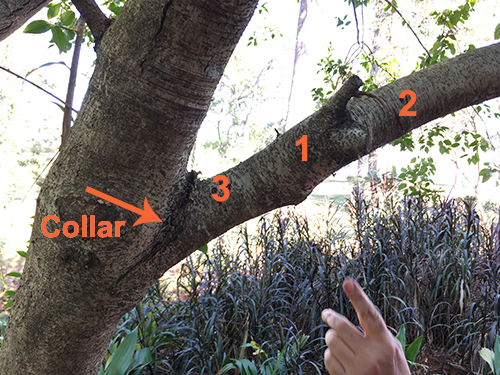
This is the order in which you'll make the cuts.
Step One
Make a cut on the underside of the branch you are pruning. This cut should be made about 12 inches away from the branch collar and should be a quarter to halfway through the limb. When a heavy limb is only cut from the top, the bark will often peel and tear away from the main branch or tree trunk that is being left. This damage to the tree is avoided by making this initial undercut.
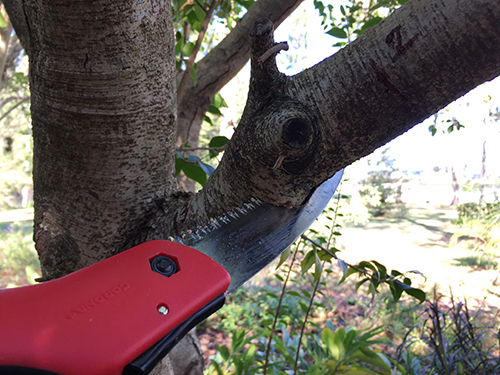
Step Two
Make a cut on the topside of the branch now. This cut should be about six inches away from your undercut. Keep cutting until the branch begins to snap. It should snap down to your initial cut and fall cleanly away.
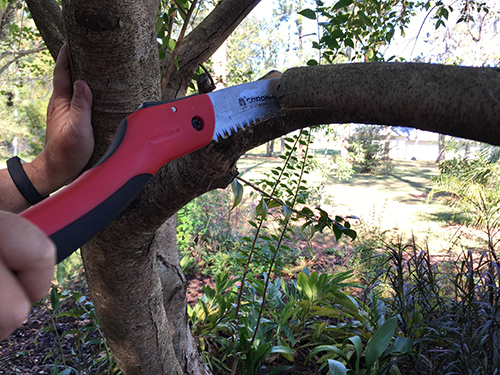
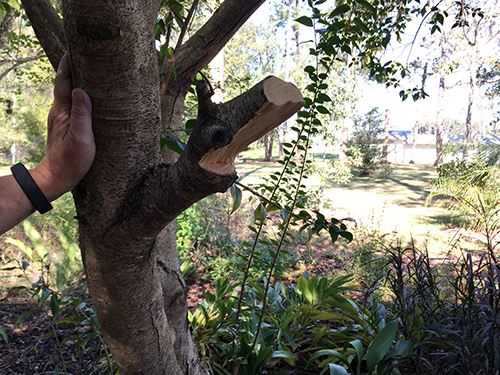
Step Three
Now that the bulk of the branch's weight has been removed, you can trim the limb back to the root collar. Avoid making flush cuts as this will cut into the actual growth layer of the tree and prevent proper healing. Be sure that the cut you are making is at a 45 degree angle so that water does not pool on the open wound to the tree, preventing the wound to properly heal.
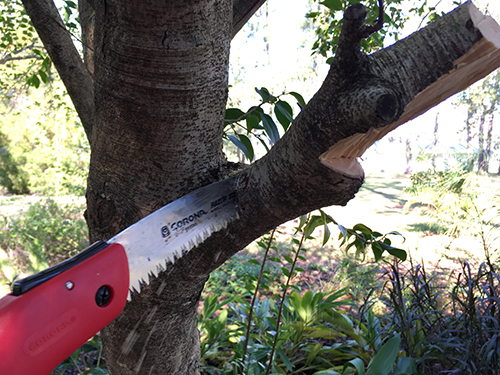
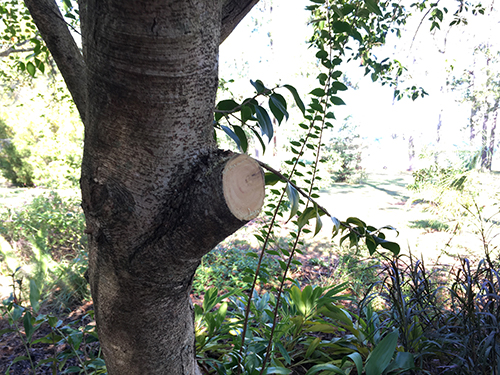
Pruning Rules
Keep these rules in mind when deciding to prune.
- Keep it healthy. Remove all dead, diseased, or injured branches.
- Keep it strong. Remove or reduce the length of stems that compete with the main leader.
- Keep it uniform. Remove branches that cross or touch each other and any that look out of place.
- Keep it minor. You should only tackle minor pruning tasks in your landscape. Hire an arborist certified by the International Society of Arboriculture to prune trees taller than about 15 feet. Correct pruning makes trees more resistant to hurricane damage.
-
Comment by Chief Walks on November 24, 2017 at 1:10pm
-
I have created a new page: How to Grow Great Garlic: Expert Tips for a Blue-Ribbon Crop --------->
-
Comment by Chief Walks on November 21, 2017 at 4:53pm
-
I have created a new page: 33+ Genius Uses For Old Garden Hoses ------------->
-
Comment by Chief Walks on October 28, 2017 at 10:53am
-
Comment by Chief Walks on October 27, 2017 at 6:52pm
-
Comment by Chief Walks on October 27, 2017 at 6:50pm
-
Comment by Chief Walks on October 27, 2017 at 6:48pm
-
Comment by Chief Walks on September 27, 2017 at 8:57am
Pages (186)
- HARVESTING TIPS
- Three Sisters
- Growing Vegetables Through the Seasons With Succession Planting
- Growing White Sage
- How Much Should You Plant In A Year?
- Starting an Organic Garden
- Gardening with kids.
- How to Grow The Top 10 Most Nutritious Vegetables in Your Garden
- Don’t Wait! Plan Your Garden Now!
- The chicken for the small garden farm.
© 2025 Created by LadyHawkღ.
Powered by
![]()

You need to be a member of Gardener's Corner to add comments!